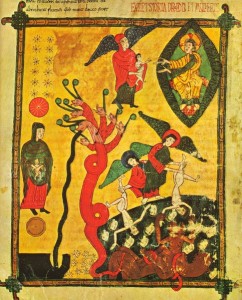On Prophecy, a Fascinating Book and a Great Earthquake
JANUARY 6, 2013 BY
 Chuck Swindoll on prophecy: “Those who leave little room for mystery leave a lot of room for mistakes.”
Chuck Swindoll on prophecy: “Those who leave little room for mystery leave a lot of room for mistakes.” ).
). ).
). ).
). is a picture of the rapture of the Church and so all the events of Revelation 4 and beyond happen after this incredible moment.)
is a picture of the rapture of the Church and so all the events of Revelation 4 and beyond happen after this incredible moment.) at the opening of the 6th seal. It’s hard to argue against this being the last and final earthquake at the return of Jesus Christ to the earth.
at the opening of the 6th seal. It’s hard to argue against this being the last and final earthquake at the return of Jesus Christ to the earth. at the pouring of the 7th bowl of wrath.
at the pouring of the 7th bowl of wrath.